Flamingo coloring pages offer a unique and engaging way to immerse oneself in the vibrant world of these elegant and graceful birds. With their long, slender necks, vivid colorful feathers, and distinctive beaks, flamingos capture the imagination and ignite a sense of wonder. By coloring these pages, and learning about them, you can bring these magnificent creatures to life while creating your own unique interpretations. Dive into the pink-feather-filled world of flamingos as you embark on a coloring adventure filled with relaxation, inspiration, and the joy of educational discovery.
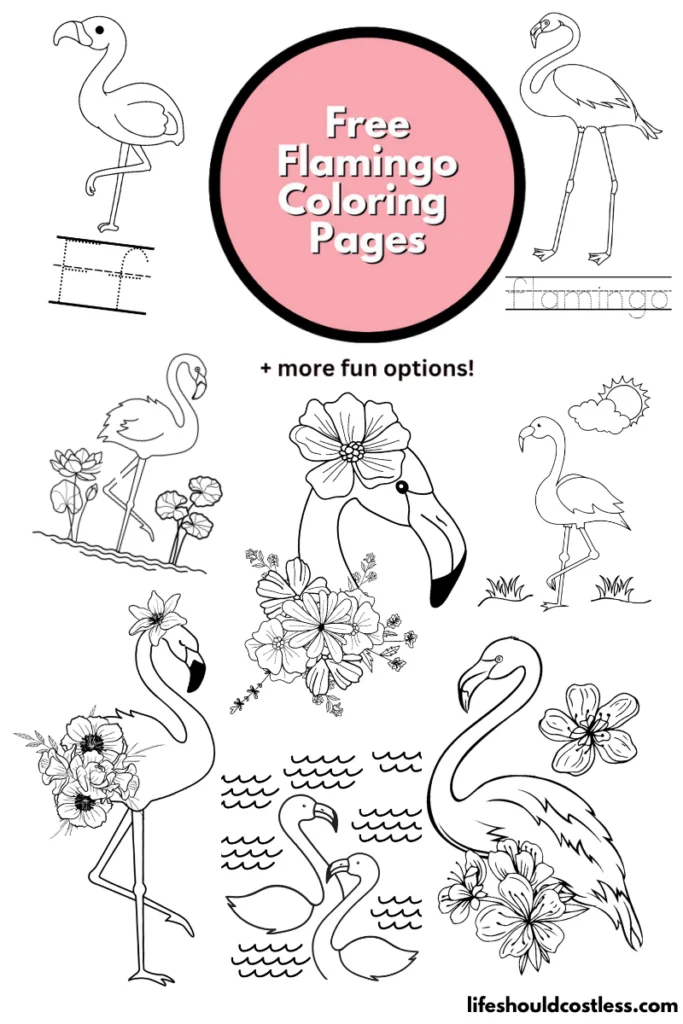
Simply choose the design that appeals to you, save the free downloadable PDF template, print it, and unleash your creativity by coloring it to your heart’s desire.
Alternatively, you can utilize the templates as embroidery patterns or draw inspiration from them for delicate fine line tattoos.
Table of Contents, Skip Ahead To What You're Looking For
Flamingo facts
For those who are new to my coloring pages, it’s important to note that I always try to provide an opportunity for you to learn about the subject matter, making it a seamless integration with educational activities.
So, let’s embark on this journey together, where you can not only enjoy coloring but also enhance your knowledge and transform it into an educational experience.
Get ready to delve into an enriching adventure!
Here are some fun and interesting, simplified, facts about flamingos (my reference source can be found here):
- Flamingos are known for their vibrant pink or reddish color, which is derived from the pigments in the algae and small crustaceans they consume.
- These birds are highly social creatures and often gather in large colonies, sometimes consisting of thousands of individuals.
- Flamingos are expert filter feeders. They use their specialized beaks to filter out tiny organisms, such as brine shrimp and blue-green algae, from the water.
- Despite their long necks, flamingos actually have only 19 vertebrae, similar to most other birds. Their necks can be curved or S-shaped when feeding.
- Flamingos have unique bills with a downward bend, allowing them to feed more efficiently by stirring up the mud and water to access their food.
- They have webbed feet, which enable them to wade in shallow water and walk on muddy surfaces without sinking.
- Flamingos can stand on one leg for extended periods. This behavior helps them conserve body heat by reducing the surface area exposed to the cold water.
- Their long legs are not only ideal for wading but also serve as stilts, allowing them to navigate through deeper waters while foraging.
- Flamingos engage in elaborate courtship displays, which involve synchronized group movements, vocalizations, and elaborate head-flagging.
- These birds are excellent flyers, capable of reaching speeds of up to 35 miles per hour (56 kilometers per hour).
- Flamingos have been known to travel long distances, with some individuals flying hundreds of miles in search of suitable feeding and breeding grounds.
- The oldest known flamingo lived to be at least 83 years old, highlighting their potential for long lifespans in captivity.
- Flamingos are known for their elaborate mating rituals. During courtship, male flamingos perform intricate dances, where they display their wings, stretch their necks, and vocalize to attract a mate.
- Flamingos have an extraordinary ability to drink hot water. They can tolerate water temperatures of up to 60 degrees Celsius (140 degrees Fahrenheit) due to a unique adaptation in their bills that prevents heat transfer to their bodies.
- The flamingo’s iconic pink coloration is not present at birth. Chicks have gray feathers that gradually turn pink as they consume a diet rich in carotenoid pigments.
- Flamingos have a mutualistic relationship with another bird species called the “roseate spoonbill.” They often share nesting sites, benefiting from the spoonbill’s alertness to predators and the spoonbill benefiting from the flamingo’s aggressive defense of the nest.
- Flamingos are capable of recognizing their offspring within the large colonies. Parent flamingos can locate their chicks among thousands of other young birds by recognizing their distinctive calls and unique vocalizations.
These fascinating facts provide just a glimpse into the captivating world of flamingos. Enjoy exploring more about these remarkable birds!
Here are some other reputable resources to learn about flamingos while coloring:
- https://kids.nationalgeographic.com/animals/birds/facts/flamingo
- https://nationalzoo.si.edu/animals/news/why-are-flamingos-pink-and-other-flamingo-facts
- https://www.nationalgeographic.org/media/photo-ark-american-flamingo/
- To see all of my free printables, go here.
- To see an alphabetized index of all of my coloring pages, go here.
- To see all of my Animals coloring pages, go here.
- To see all of my Birds coloring pages, go here.
Coloring tips
When it comes to pictures of flamingos to color, here are some tips and tricks to enhance your coloring experience:
- Research flamingo colors: Flamingos come in various shades of pink, red, and even orange. Take a moment to research different species of flamingos to get a better understanding of their color variations. This will allow you to add more realism or explore creative color schemes.
- Gradual shading: To achieve a smooth and realistic look, consider using gradual shading techniques. Start with lighter shades and gradually build up to darker tones, especially in areas such as the feathers and beak. This will add depth and dimension to your coloring.
- Experiment with textures: Flamingos have unique textures in their feathers, beaks, and legs. Use different coloring techniques to mimic these textures. For example, you can try feathering, cross-hatching, or stippling to add detail and texture to the plumage.
- Play with backgrounds: Don’t forget to consider the background when coloring your flamingo picture. It can greatly enhance the overall composition. You can create a natural habitat with water, foliage, or a sunset sky, or experiment with abstract or geometric patterns to make your flamingo stand out.
- Mix and blend colors: Flamingos have subtle color variations in their plumage. Use blending techniques to create smooth transitions between colors. You can achieve this by using colored pencils, markers, or even watercolor techniques.
- Embrace creativity: While realism can be rewarding, don’t be afraid to unleash your creativity. You can experiment with unconventional color palettes, add patterns or designs to the feathers, or even create a whimsical or fantasy-themed flamingo. Let your imagination guide you.
- Reference images: If you’re looking for accuracy, reference high-quality images of flamingos while coloring. Pay attention to details such as beak shape, leg color, and feather patterns. This will help you capture the essence of these beautiful birds.
Remember, coloring should be a relaxing and enjoyable activity. Feel free to explore different techniques, colors, and styles to bring your flamingo picture to life.
Options For Printing:
Letter F is for flamingo writing practice worksheets
*My letter F is for flamingo coloring sheet printables are specifically designed to be used in a classroom setting, they are the only printable options on this page that do not need written permission to use in a public setting.
Please send the link to this post along if anyone asks you where you got them. Thank you!

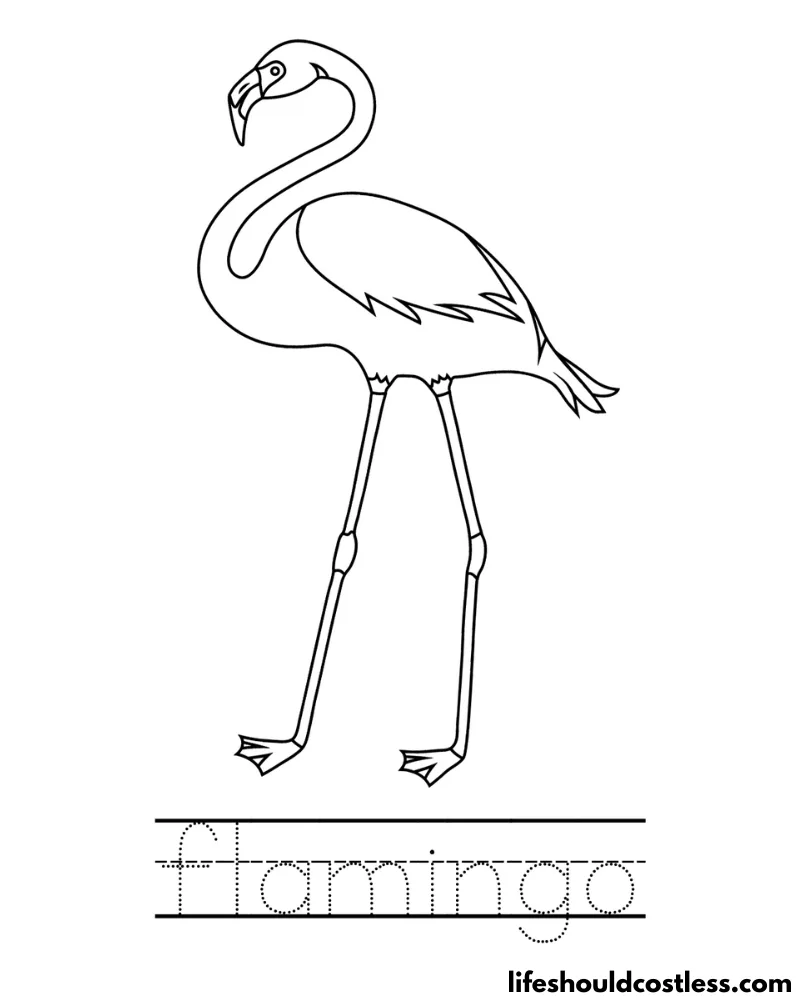
Floral Flamingos
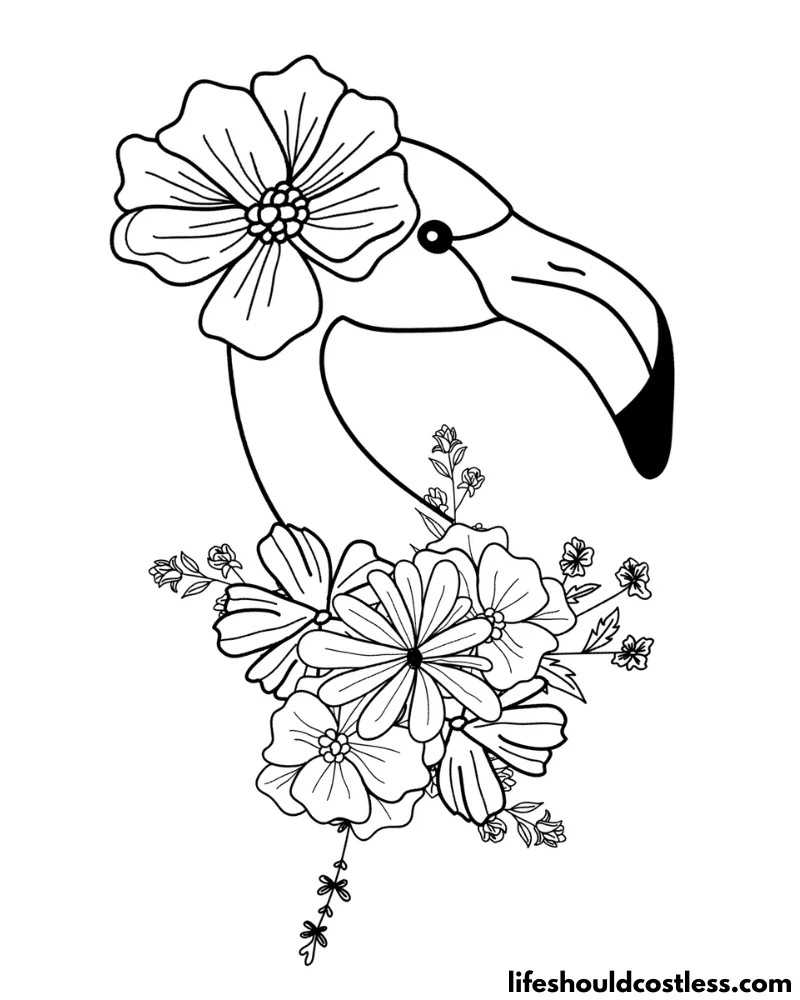

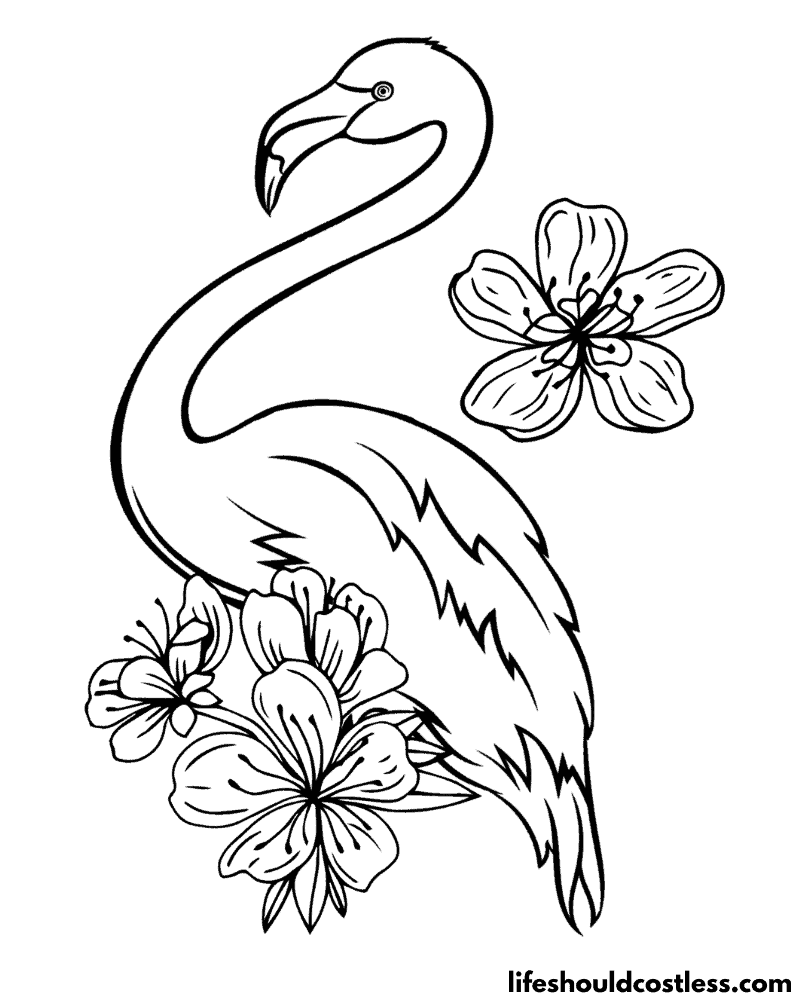
Various Other Flamingos
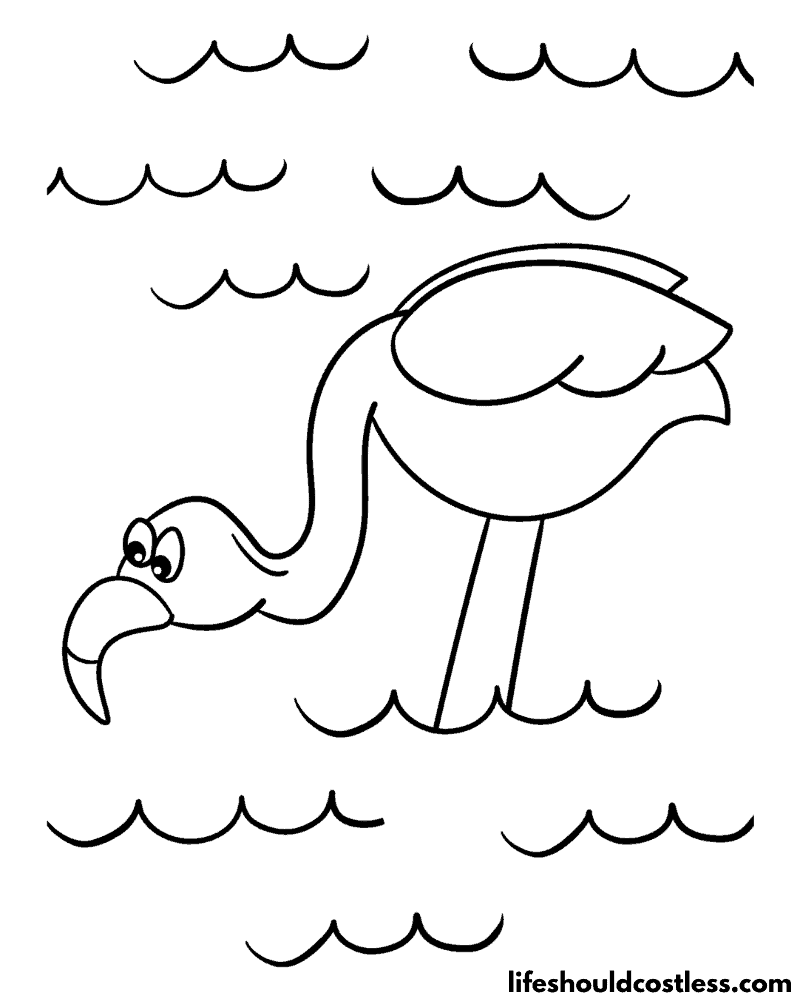
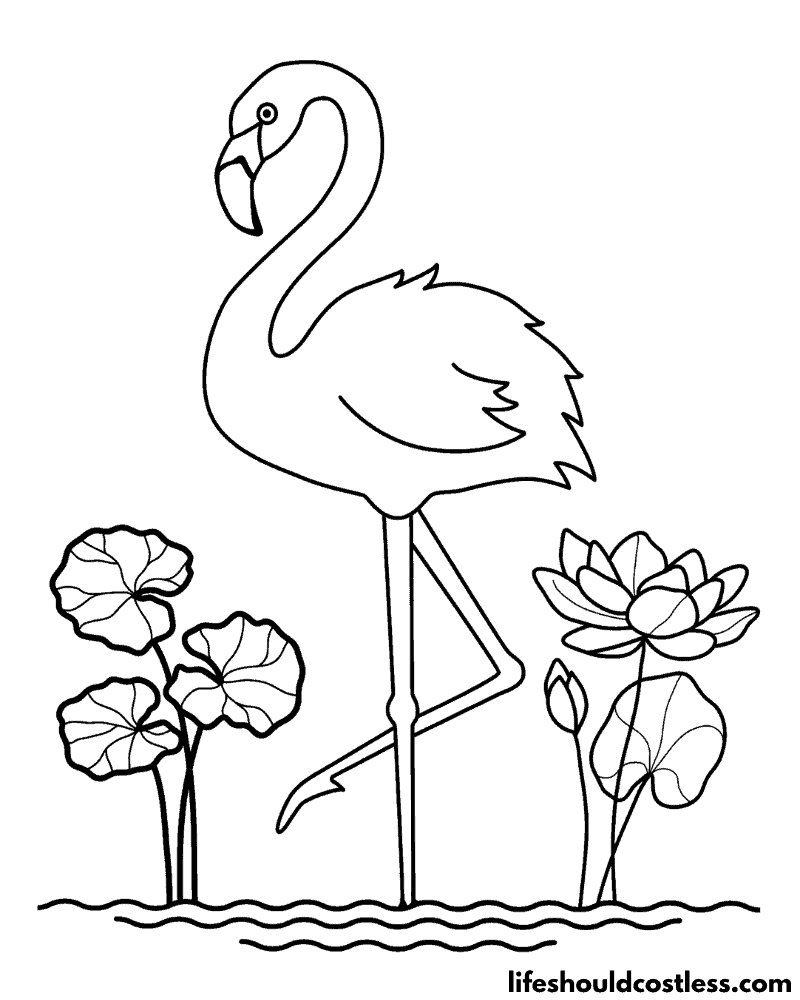
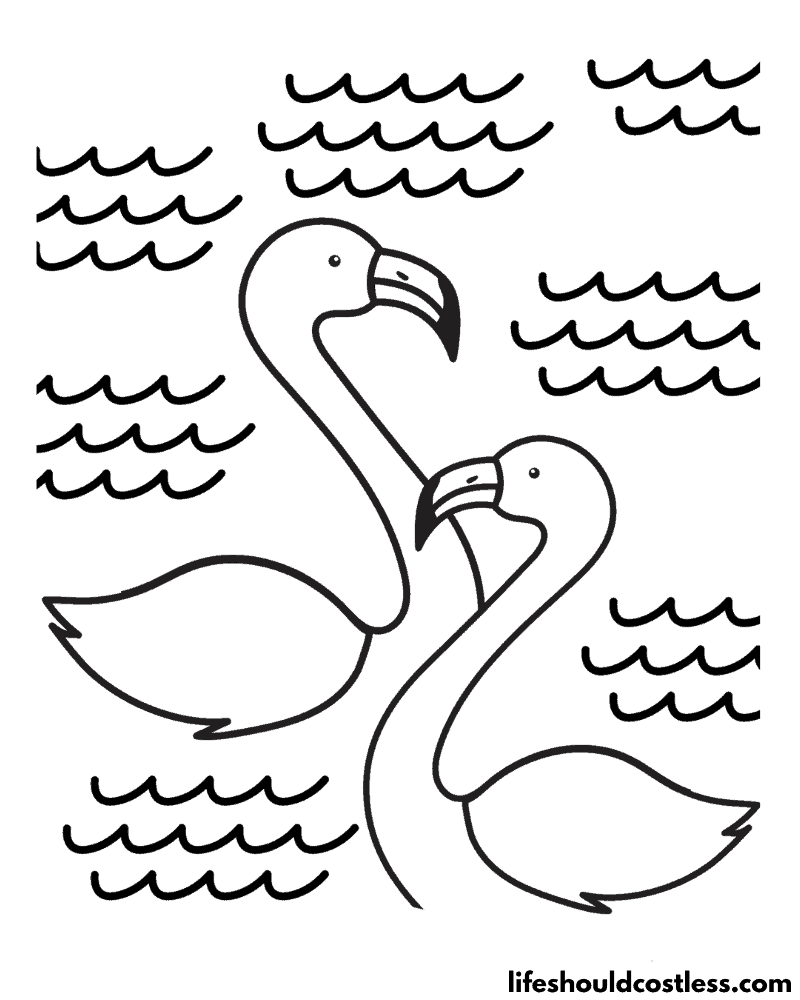
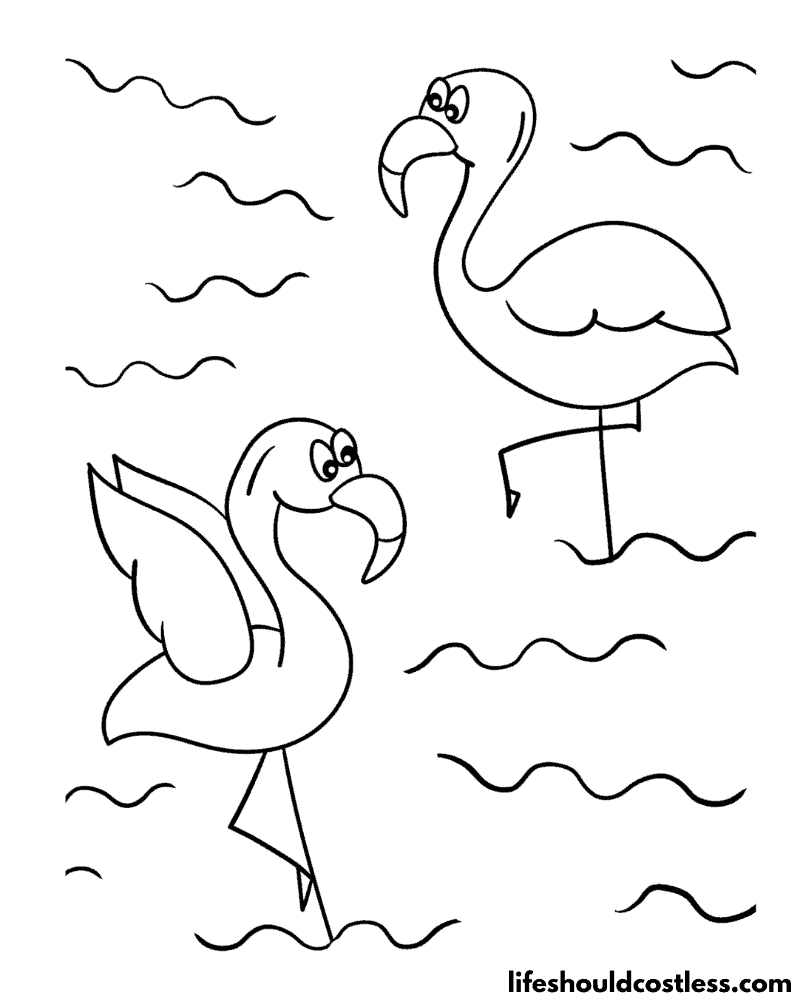
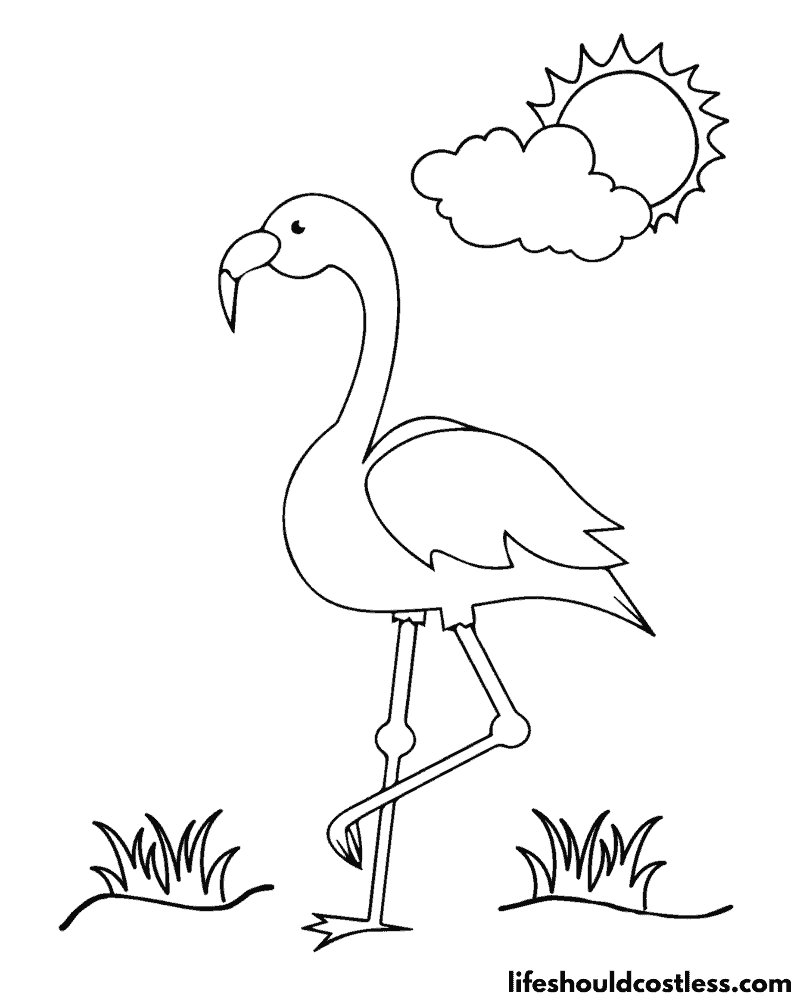
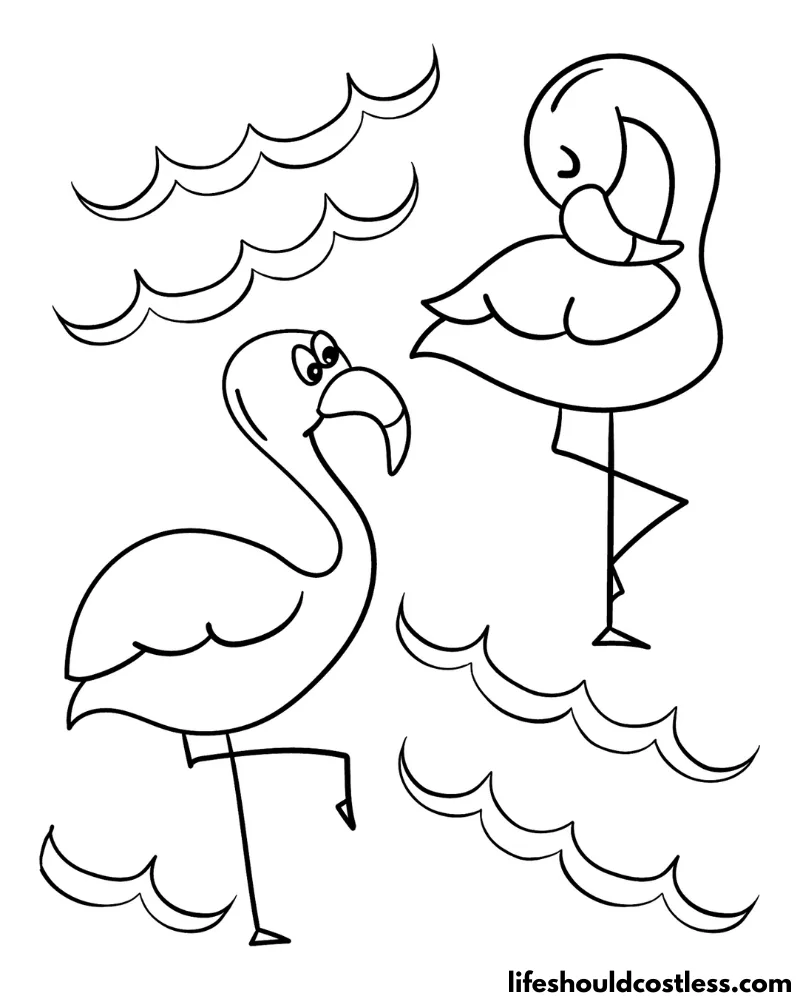
FAQ’s
The true color of a flamingo’s feathers can vary depending on several factors, including its diet and age.
Flamingos are not born with their iconic pink coloration; it develops over time.
The pink color of flamingos is primarily derived from the pigments in the food they consume, specifically carotenoids.
Carotenoids are natural compounds found in algae, crustaceans, and other organisms that flamingos eat. These pigments accumulate in the flamingo’s feathers and skin, giving them their distinctive pink or reddish hue.
However, it’s important to note that not all flamingos have the same exact shade of pink. Different species and individuals can exhibit variations in color intensity and tone. Factors such as age, diet quality, breeding status, and overall health can influence the intensity of the pink coloration.
Young flamingos often have gray or whitish feathers, and their color develops gradually as they consume more carotenoid-rich foods.
Adult flamingos typically exhibit vibrant pink or reddish feathers, but the exact shade can range from pale pink to deep crimson.
It’s worth mentioning that when flamingos are not consuming enough carotenoid-rich foods, their feathers may appear paler or even white. This is more common in captive flamingos that are not provided with a diet rich in carotenoids.
Overall, the true color of a flamingo is a result of its diet and the accumulation of pigments in its feathers, resulting in the beautiful shades of pink that we often associate with these graceful birds.
Flamingos do not naturally turn blue. Their distinctive coloration ranges from pink to reddish due to the accumulation of carotenoid pigments in their feathers, as mentioned earlier.
However, there are rare instances when flamingos can appear to have a bluish hue. This phenomenon is typically observed in captive flamingos rather than their wild counterparts. The blue coloration is not a natural pigment but rather a result of diet or environmental factors.
One possible cause of blue flamingos in captivity is a change in their diet. Flamingos in the wild obtain carotenoid pigments from their natural food sources, such as algae and small crustaceans. These pigments are responsible for their pink color. If the diet of captive flamingos lacks sufficient carotenoids, their feathers may lose their pink coloration and appear pale or white, causing a bluish reflection under certain lighting conditions.
Additionally, the presence of certain minerals or substances in the water or environment can also give flamingos a temporary blue appearance. This can occur if the water they inhabit contains blue-green algae or if they come into contact with certain chemicals or dyes.
It’s important to note that blue flamingos are relatively rare occurrences and not a natural or permanent coloration for these birds. Their true color is predominantly pink or reddish, resulting from their diet and the accumulation of carotenoid pigments in their feathers.
*I will add more flamingo colour / color questions and answers as the questions get sent to me.
In conclusion, educational flamingo coloring pages offer a wonderful opportunity for both entertainment and learning.
Through the exploration of these coloring sheets, individuals of all ages can immerse themselves in the captivating world of flamingos while expanding their knowledge about these remarkable birds.
By engaging in coloring activities, one can develop a deeper appreciation for the unique characteristics, behaviors, and habitats of flamingos.
From discovering the vibrant hues of their feathers to understanding their specialized feeding techniques, these coloring pages provide a creative and interactive means to foster an educational experience.
Whether you’re a coloring enthusiast seeking a fun project, or an educator looking for a valuable teaching resource, these flamingo color sheets offer a delightful blend of creativity and knowledge that can inspire and engage learners of all backgrounds.
So, grab your coloring tools and embark on a colorful journey into the enchanting aviary world of flamingos, where imagination and education intertwine.
Thanks so much for stopping by my blog and supporting my endeavors to make people’s lives a little easier/better/more affordable. If you liked this post, or found it helpful in any way, please make sure to share it with your family, friends, and co-workers via social media.
Or you could even send them the direct link via email. Whichever way you choose to spread the love, I super appreciate it! ~Sarah

How to follow & support this site
- If you would like to subscribe to my email list, go here.
- Make sure to follow along via social media, by going here.
- If you would like to learn how to really show your support to this site (at no cost to you), go here.
- If you would like to make a direct donation to the site, go here.
Check out my other free printables
- To see all of my free printables, go here.
- To see an alphabetized index of all of my coloring pages, go here.
- To see all of my Animals coloring pages, go here.
- To see all of my Birds coloring pages, go here.
Otherwise, here are direct links to several of my other related posts that you’re also going to love:
Animals / Birds
Animals / Mammals
Animals / Insects
Other good resources for a printable flamingo
- https://clipart-library.com/flamingo-coloring-page.html
- https://www.vectorstock.com/royalty-free-vectors/flamingo-coloring-page-vectors
- https://www.animalstown.com/animals/f/flamingo/coloring-pages/flamingo-coloring-02.php
*This post was originally shared to this blog on 06/13/2023, and has since been updated to improve user experience, add video instruction, as well as to make it as shareable as possible across the social medias.
**Please note that I do try my hardest to provide factual, but easy to understand, information about each topic. If you notice a discrepancy in my coloring pages, facts, or see something that you deem “misinformation/incorrect” please make sure to notify me about it. I would prefer that you send me an email with a link to a more reputable resource on that subject, so that I can correct it as soon as possible. Thanks so much for helping this site become the best that it can be!
***Resources from djinkers were used in the production of this article.
